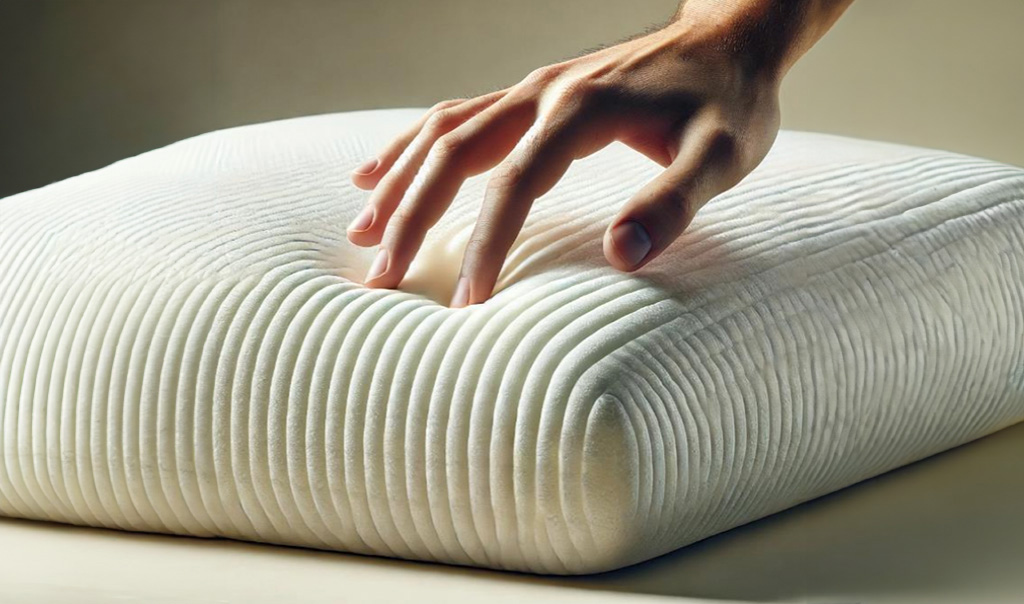Viscoelastic Polyurethane Systems and Water-Based Mold Release Agent Solutions
Viscoelastic Polyurethane Systems and Water-Based Mold Release Agent Solutions
Indtroduction
One of the most remarkable advancements in polymer science in recent years is the development of viscoelastic polyurethane systems, which stand out for their unique mechanical properties and broad range of applications. Unlike traditional elastomers, these systems exhibit both viscous and elastic behavior, making them increasingly popular in modern engineering applications.
When weight is applied to viscoelastic polyurethane foams, they gradually deform and once the weight is removed, they slowly return to their original shape. This slow recovery behavior allows the foam to adapt to the shape of an object over time, providing continuous pressure distribution. Moreover, due to their slow recovery properties, viscoelastic foams effectively absorb vibrations and shocks, making them ideal for cushioning and protective applications. Another significant feature of these foams is their temperature sensitivity; viscoelastic foams respond to ambient temperature and body heat by softening, which enables them to conform more comfortably to body contours. This characteristic is particularly advantageous in products such as mattresses, pillows, and seat cushions, where enhanced comfort is a priority. The unique nature of viscoelastic polyurethanes stems from their molecular structure, allowing their properties to be finely tuned for specific applications.
Molecular Structure And Chemical Properties
The molecular structure underlying viscoelastic polyurethane systems is based on a complex chemical framework. The primary mechanism involves urethane bonds formed through controlled reactions between isocyanate groups and polyol molecules. Polyol chains, known as the soft segment, are responsible for the viscous properties of the material, while isocyanate-based structures, referred to as the hard segment, contribute to its elastic behavior. The viscoelastic properties of polyurethane foams can be tailored by adjusting the molecular weight distribution and functionalities of the polyols and isocyanates used.
Polyols and their chain lengths are critical parameters that directly influence the physical properties of the final product; high molecular weight polyols result in more flexible and softer materials, while short-chain polyols produce tougher and more durable structures. Additionally, crosslinking density significantly affects the mechanical properties of the material; achieving optimal crosslinking density is crucial for obtaining the desired viscoelastic behavior.

Viscoelastic polyurethane systems find extensive use across various industrial applications. In the automotive sector, they are commonly used in vehicle suspension systems and vibration-damping components. In these applications, the material's dynamic behavior under load and its energy absorption capacity are critical. In the medical field, biocompatible versions of viscoelastic polyurethanes are utilized in orthopedic supports and prosthetic materials. Beyond these, they are widely used in pillows, mattresses, and cushion applications.
Mold Release Agent Selection and Water-Based Mold Release Agent Solutions
Mold release agents are auxiliary chemical substances that play a critical role in the production process of viscoelastic polyurethane systems. These materials ensure the smooth removal of polymer systems from molds and regulate surface tension. Mold release agents are important components that optimize the surface quality of the product and enhance production efficiency. In these systems, maintaining the foam structure is essential.
The mold release agent;
- should not damage the cellular structure of viscoelastic foam,
- should ensure uniform cell distribution,
- should not adversely affect foam density.
From a thermal perspective, it must remain stable at application temperatures during the reaction and should not negatively impact the foam’s thermal conductivity. In terms of surface quality, it should achieve a smooth surface, prevent defects such as shrinkage and bubbles, and accurately transfer the mold pattern. Mold release agents that do not interfere with the memory foam properties, recovery time, or foam elasticity are preferred. They must also be compatible with polyol and isocyanate systems, should not affect catalyst systems, and should not hinder the curing process. From a process perspective, the agent should be easy to apply and provide uniform distribution within the mold. In terms of demolding performance, it should ensure clean and easy removal, require minimal force, and leave no residue on the part surface. For specific requirements of viscoelastic foam, it should not affect the softness of the foam or disrupt pressure distribution. Optimizing all these properties through the characterization of the mold release agent is essential for the production of high-quality and high-performance viscoelastic foam. Water-based mold release agents used in viscoelastic polyurethane systems offer a wide range of applications and provide safer use due to their low volatile organic compound (VOC) content.
Teknik Kimya’s solutions for viscoelastic polyurethane systems spread well on the mold surface to create a uniform film, ensuring that the produced viscoelastic parts have the desired properties.
Armaliz 2530, Armaliz 2532, Armaliz 2533, Armaliz 2535, and Armaliz 2536 are products specifically developed for flexible polyurethane foam and viscoelastic polyurethane systems. These products have different levels of oiliness, provide balanced release performance, remain stable in the working environment without phase separation, and are non-flammable and non-combustible, ensuring a safer application environment. These products are applied to mold surfaces by spraying, ensuring efficient and uniform coverage.
| Ürünler (Products) | Özellikleri (Properties) |
|---|---|
| Armaliz 2530 | Water-based mold release agent providing a dry surface for viscoelastic and flexible polyurethane foam. |
| Armaliz 2521 | Water-based mold release agent providing an oily surface for viscoelastic and flexible polyurethane foam. |
| Armaliz 2533 | Water-based mold release agent providing a slightly oily surface for viscoelastic and flexible polyurethane foam. |
| Armaliz 2535 | Water-based mold release agent providing a slightly oily/oily surface for viscoelastic and flexible polyurethane foam. |
| Armaliz 2536 | Water-based mold release agent providing an oily surface for viscoelastic and flexible polyurethane foam. |